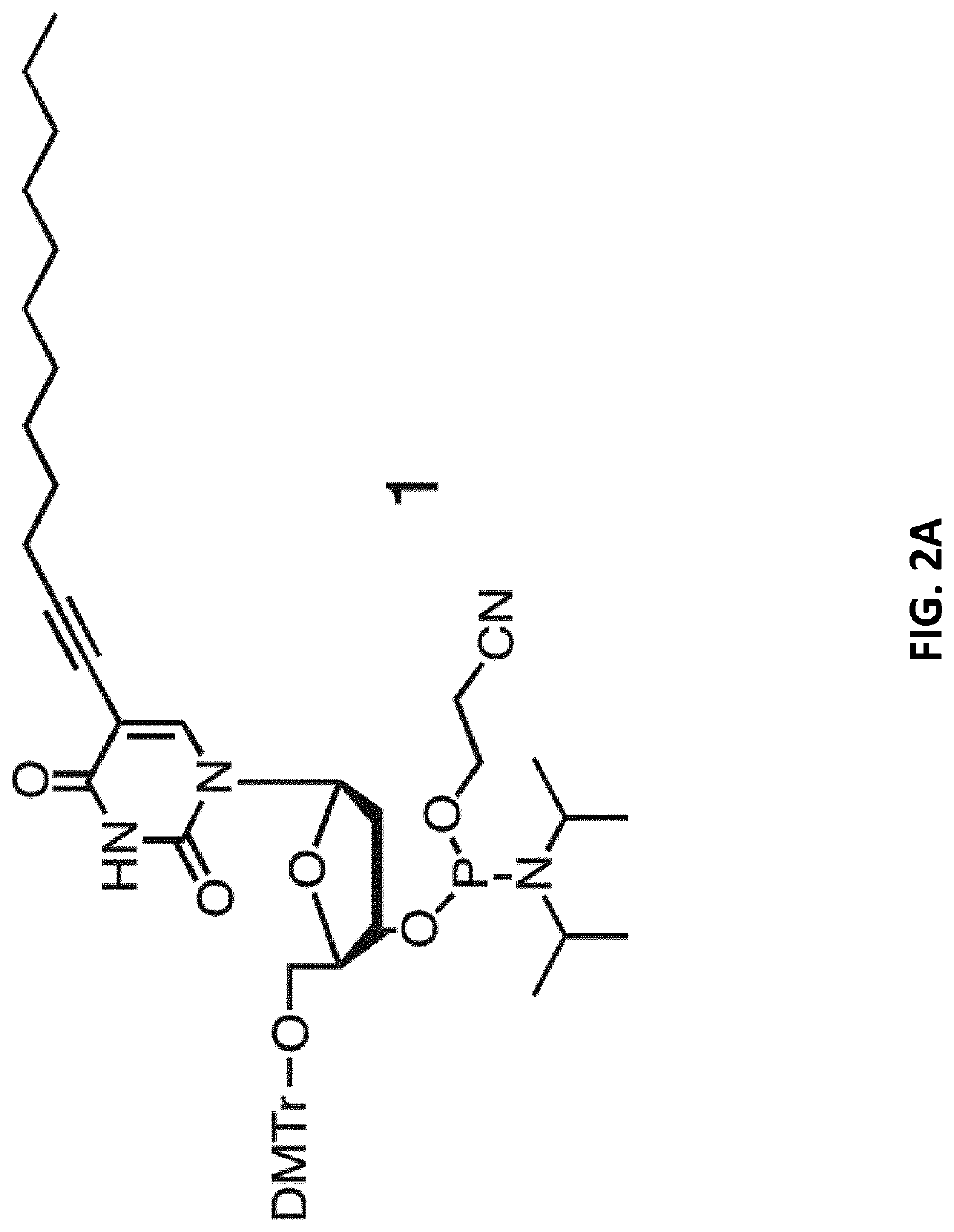Nucleic acid-based assembly and uses thereof
a technology of nucleic acid and nanocarrier, which is applied in the direction of drug photocleavage, drug composition, biochemistry apparatus and processes, etc., can solve the problems of insufficient serum stability and cell internalization efficacy, inefficient cellular uptake and short intracellular half-life, and significant disruption of binding affinity
- Summary
- Abstract
- Description
- Claims
- Application Information
AI Technical Summary
Benefits of technology
Problems solved by technology
Method used
Image
Examples
example 1
Materials and Methods
1.1 Materials
[0105]All chemicals including doxorubicin (DxR) were purchased from Sigma-Aldrich unless otherwise specified and were used as received. cMet-Fc, which represents the ectodomain of cMet fused to the Fc domain of human IgG1 was purchased from R&D Systems. Wheat Germ Agglutinin, Alexa Fluor® 488 Conjugate and Hoechst 33342 were purchased from Life Technologies (Grand Island, N.Y., USA). γ-32P labeled ATP (250 μCi) was purchased from PerkinElmer Health Science B. V., The Netherlands. T4 Polynucleotide kinase and 1× Polynucleotide buffer were obtained from New England Biolabs, Frankfurt a. M., Germany. Binding buffer used for the aptamer competition-binding assay was prepared by adding E.coli tRNA (Roche AG, Mannheim, Germany), bovine serum albumin (BSA; Thermo Fischer Scientific) into the Dulbecco's PBS (Gibco, Life Technologies).
[0106]All solvents, reagents and building blocks for oligonucleotide synthesis were obtained from Proligo, Hamburg, Germany. ...
example 2
Synthesis of trCLN3-L4 and its Two-Point Mutant trCLN3.mut-L4
2.1. Synthesis of Lipid-Modified 5′-DMT-2′-Deoxyuridine-Phosphoramidite
[0118]5-(1-Dodecynyl)-modified 5′-DMT-2′-deoxyuridine-phosphoramidite 1 (FIG. 2A) was synthesized from 5-Iodo-2′-deoxyuridine as starting material using synthesis protocols reported in a previous study (M. Kwak et al., J. Am. Chem. Soc. 2010, 132, 7834-7835; which reference is incorporated by reference herein in its entirety) and analyzed by ESI mass spectrometry and 31P-NMR. Characteristics:
[0119]Chemical formula: C51H67N4O8P
[0120]Molecular weight: 894.47 g / mol
[0121]31P-NMR: (162 MHz, CD2Cl2) δ [ppm]=149.19 (s), 149.33 (s).
[0122]MS: (ESI, positive) m / z (%) =917.5 (16) [M+Na]+, 895.5 (28) [M+H]+, 303.1 (100) [DMT+].
[0123]HRMS: (ESI, positive) m / z calculated for C51H67N4O8PH [M+H]+895.4769, found: 895.4773
2.2. Characterization by 31P NMR
[0124]31P NMR (162 MHz, CD2Cl2) δ [ppm]: 149.19, 149.33. See FIG. 2B.
2.3. Lipidated Anti-cMet Aptamer trCLN3-L4 and its...
example 3
Critical Micelle Concentrations of trCLN3 Aggregates
3.1. Critical Micelle Concentrations Via FRET Studies
[0129]The critical micelle concentration (CMC) value of the trCLN3-L4 aggregates was determined by intermolecular Förster resonance energy transfer (FRET) experiments using a FRET pair of 6-Fam and Atto647N both attached to the 5′-end of the trCLN3-L4 motif 3. The FRET labels were attached at the 5′-end in immediate proximity to the lipid-modifications to ensure that intermolecular FRET effects report the formation of micellar nanoconstructs at a concentration above the critical micelle concentration.
[0130]In the FRET experiment, a series of nanoconstructs was self-assembled by mixing 6-Fam- and Atto647N-labeled motif 3 in 1:1 ratios in a concentration range between 0.035-15 μM (Table 2). The solutions were incubated at 70° C. for 10 minutes in the dark and slowly cooled down to room temperature overnight at a rate of 1° C. per 10 minutes. The mixtures were transferred into a 384...
PUM
| Property | Measurement | Unit |
|---|---|---|
| Size distribution | aaaaa | aaaaa |
| incubation time | aaaaa | aaaaa |
| incubation time | aaaaa | aaaaa |
Abstract
Description
Claims
Application Information
 Login to View More
Login to View More - R&D
- Intellectual Property
- Life Sciences
- Materials
- Tech Scout
- Unparalleled Data Quality
- Higher Quality Content
- 60% Fewer Hallucinations
Browse by: Latest US Patents, China's latest patents, Technical Efficacy Thesaurus, Application Domain, Technology Topic, Popular Technical Reports.
© 2025 PatSnap. All rights reserved.Legal|Privacy policy|Modern Slavery Act Transparency Statement|Sitemap|About US| Contact US: help@patsnap.com



